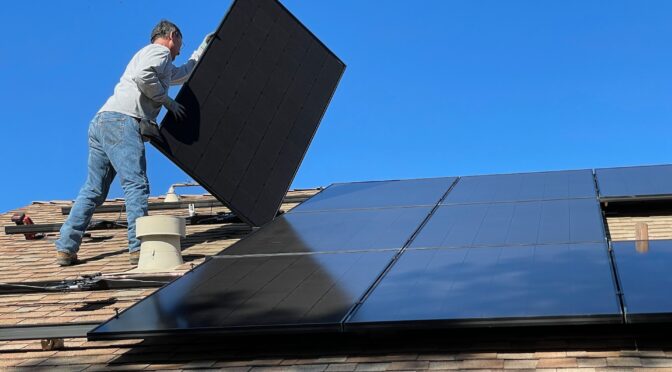Homeowners are increasingly seeking ways to reduce their carbon footprint and make eco-conscious choices for their homes. One significant step towards a greener home is selecting the right roofing system. Traditional roofing materials, such as asphalt shingles, have been the standard for many years. However, they come with environmental drawbacks that environmentally conscious homeowners are keen to avoid.
Cool Roofs
Cool roofs are a sustainable alternative that addresses some of the environmental issues associated with traditional roofing materials. These roofs are designed to reflect sunlight and absorb less heat, reducing the need for air conditioning during hot summers. By lowering energy consumption, cool roofs not only cut utility bills but also help reduce greenhouse gas emissions.
Solar Panels
For homeowners interested in generating clean energy, solar roofing systems offer an excellent solution. Solar panels, which can be integrated into various roofing materials, harness the power of the sun to generate electricity. This not only reduces your carbon footprint but can also lead to substantial long-term savings on energy bills. Solar roofing systems are a win-win for both homeowners and the environment, making them an attractive, eco-friendly option.
Metal Roofing
Metal roofing materials, such as aluminum and steel, are known for their longevity and durability. They can last for decades, reducing the need for frequent replacements. Moreover, metal roofing materials are highly recyclable, which means they can be repurposed into new products at the end of their life cycle. This recyclability significantly reduces waste and lessens the environmental impact of roofing materials.
Green Roofs
Green roofs, also known as living roofs, are a unique and visually appealing eco-friendly roofing option. These roofs are covered with vegetation, which not only adds natural beauty to your home but also provides insulation benefits. Green roofs reduce heat absorption, improve air quality, and mitigate the urban heat island effect. They contribute positively to the environment by promoting biodiversity and reducing stormwater runoff.
Rubber Roofing
Rubber roofing materials are crafted from recycled tires, offering an innovative solution to sustainability. These roofs are not only eco-friendly but also highly durable and weather-resistant. By repurposing discarded tires, rubber roofing helps reduce landfill waste and minimizes the environmental impact of tire disposal.
Wood Shingles and Shakes
For homeowners seeking a more traditional and natural aesthetic, wood shingle and shake roofing materials are an attractive option. When sourced sustainably from certified forests, wood roofing materials can be an eco-conscious choice. However, it’s essential to ensure responsible sourcing practices to prevent deforestation and support sustainable forestry management.
Considerations for Choosing an Eco-Friendly Roofing System
When selecting an eco-friendly roofing system, several factors come into play. Budget considerations, long-term savings, local climate, and the environmental impact of materials should all be weighed carefully. Homeowners should consult with roofing professionals to determine the best option for their specific needs and goals.
Conclusion
Making the switch to eco-friendly roofing systems is a significant step towards creating greener homes. By choosing sustainable alternatives like cool roofs, solar panels, metal roofing, green roofs, rubber roofing, or responsibly sourced wood shingles, homeowners can reduce their environmental impact while enjoying long-term benefits. The decision to invest in eco-friendly roofing not only contributes to a more sustainable future but also enhances the value and efficiency of your home.
